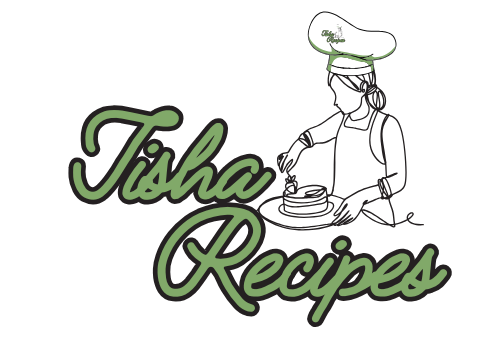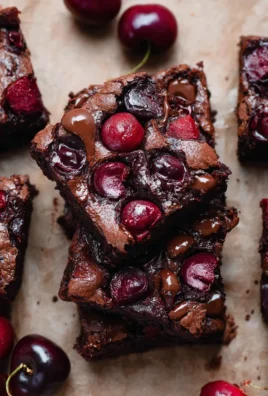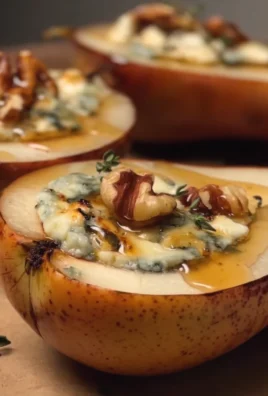
Red velvet cupcakes are an iconic dessert that perfectly balances elegance and flavor. With their vibrant red hue, soft texture, and rich cream cheese frosting, they’ve become a beloved treat for countless occasions, from birthday parties to weddings. These cupcakes are more than just visually stunning; they’re a harmony of subtle cocoa flavor, tangy buttermilk, and luscious frosting that creates a taste experience unlike any other.
This guide delves deep into everything you need to know about red velvet cupcakes. From understanding their origins to perfecting the preparation process, you’ll gain all the knowledge necessary to bake a batch of flawless cupcakes that will impress friends, family, and even yourself.
Overview of Red Velvet Cupcakes
Red velvet cupcakes are a smaller, handheld version of the classic red velvet cake. What sets them apart is their unique flavor profile—a delicate balance of cocoa, tanginess from buttermilk, and the signature sweetness of cream cheese frosting. Their striking red color, often achieved with food coloring or natural alternatives like beet juice, makes them stand out on any dessert table.
Flavor Profile
- Subtle Cocoa: Unlike traditional chocolate cakes, red velvet cupcakes use only a small amount of cocoa powder, providing a mild chocolate undertone.
- Tangy Buttermilk: Buttermilk adds a slight tartness that complements the sweetness of the cake and frosting.
- Rich Frosting: The cream cheese frosting is sweet, creamy, and slightly tangy, perfectly balancing the flavors of the cupcake base.
Visual Appeal
The dramatic red hue of the cupcakes, contrasted by the snowy white frosting, makes them visually stunning. This combination has made red velvet cupcakes a favorite for festive occasions and romantic celebrations like Valentine’s Day.
Brief History and Cultural Significance
The history of red velvet cake and its cupcake counterpart is as rich as its flavor. While its origins are debated, its journey into global popularity is undeniable.
Historical Origins
- Early Beginnings: The term “velvet cake” was used in the 19th century to describe cakes with a fine, soft crumb. These cakes were often made with almond flour or cocoa to achieve their signature texture.
- Introduction of Red Color: During the Great Depression, beet juice was sometimes added to cakes for moisture, which also gave them a reddish tint. This may have contributed to the evolution of red velvet cake.
- Rise to Popularity: In the mid-20th century, red velvet cake became a Southern favorite in the United States. Its association with special occasions helped it gain national attention.
Cultural Impact
Red velvet cupcakes have transcended their origins to become a global phenomenon. They’re a staple in bakeries worldwide and are often featured in pop culture. From television shows to social media, their iconic appearance and luxurious taste make them a must-have treat.
Preparation Phase & Tools to Use
Crafting the perfect red velvet cupcake requires attention to detail and the right tools. Each step in the process contributes to the final result: a moist, flavorful cupcake with a flawless presentation.
Essential Tools and Equipment
- Mixing Bowls: For combining wet and dry ingredients separately before mixing.
- Whisk or Electric Mixer: Ensures thorough mixing and a smooth batter.
- Measuring Cups and Spoons: For precise measurements of ingredients.
- Cupcake Liners: Prevent sticking and make cleanup easier while adding aesthetic appeal.
- Muffin Tin: Provides structure to the cupcakes as they bake.
- Spatula: For scraping down the sides of the bowl to ensure even mixing.
- Cooling Rack: Allows cupcakes to cool evenly after baking.
- Piping Bag and Tips: For decorating the cupcakes with cream cheese frosting.
Importance of Tools
Each tool plays a vital role in creating the perfect cupcake. For instance, using a whisk or mixer ensures the batter is smooth and free of lumps, while a cooling rack prevents overbaking by quickly lowering the cupcakes’ temperature after they’re removed from the oven.
Preparation Tips
- Use Room Temperature Ingredients: Allow butter, eggs, and buttermilk to come to room temperature for a smoother batter and even baking.
- Don’t Overmix: Overmixing can lead to dense cupcakes. Mix just until the ingredients are combined.
- Preheat the Oven: Ensure the oven reaches the correct temperature before baking to avoid uneven cooking.
- Measure Precisely: Baking is a science, and even small variations in ingredient measurements can affect the final result.
- Fill Cupcake Liners Evenly: Use a scoop to ensure each cupcake is the same size, which helps them bake evenly.
Ingredients List (with Measurements)
Core Ingredients
- All-Purpose Flour: The base for the cupcake, providing structure.
- Granulated Sugar: Adds sweetness and moisture.
- Unsweetened Cocoa Powder: Gives the cupcakes their subtle chocolate flavor.
- Baking Soda and Baking Powder: Leavening agents that help the cupcakes rise.
- Salt: Enhances the flavors of the other ingredients.
- Buttermilk: Adds tanginess and reacts with the leavening agents for a soft crumb.
- Eggs: Bind the ingredients and contribute to the texture.
- Vegetable Oil: Ensures the cupcakes stay moist.
- Red Food Coloring: Provides the signature vibrant hue.
- Vanilla Extract: Enhances the overall flavor.
- White Vinegar: Reacts with the baking soda and buttermilk to create a fluffy texture.
Frosting Ingredients
- Cream Cheese: The main component of the frosting, providing tanginess and creaminess.
- Unsalted Butter: Adds richness and helps the frosting hold its shape.
- Powdered Sugar: Sweetens the frosting and gives it a smooth texture.
- Vanilla Extract: Adds depth to the frosting’s flavor.
Step-by-Step Instructions
Step 1: Preheat and Prepare
- Preheat your oven to 350°F (175°C) and line a muffin tin with cupcake liners.
- Lightly grease the liners if desired to ensure easy removal.
Step 2: Mix Dry Ingredients
- In a mixing bowl, sift together the flour, sugar, cocoa powder, baking soda, baking powder, and salt. Stir to combine.
Step 3: Combine Wet Ingredients
- In another bowl, whisk together the buttermilk, eggs, vegetable oil, vanilla extract, and red food coloring until smooth.
Step 4: Incorporate Dry and Wet Ingredients
- Gradually add the dry ingredients to the wet mixture, stirring gently until just combined. Avoid overmixing to maintain a light texture.
Step 5: Add Vinegar
- Stir in the vinegar, which will react with the baking soda to enhance the fluffiness of the cupcakes.
Step 6: Fill Cupcake Liners
- Using a scoop or spoon, fill each liner about ⅔ full to allow room for the cupcakes to rise.
Step 7: Bake
- Bake for 18-22 minutes, or until a toothpick inserted into the center of a cupcake comes out clean.
Step 8: Cool
- Remove the cupcakes from the oven and let them cool in the tin for 5 minutes before transferring them to a wire rack to cool completely.
Serving Suggestions
Red velvet cupcakes are as versatile in presentation as they are delicious. Their striking red color and luxurious cream cheese frosting make them a centerpiece at any event. Here are creative and thoughtful ways to serve and present your cupcakes:
Presentation Ideas
- Classic Display
Arrange the cupcakes on a tiered stand for a stunning centerpiece at parties, weddings, or special gatherings. Use white or gold cupcake liners to enhance the visual appeal. - Individual Packaging
Place each cupcake in a clear, lidded container or wrap them in decorative boxes. This is ideal for gifting or party favors. - Festive Decorations
Customize the frosting and toppings based on the occasion. For Valentine’s Day, add heart-shaped sprinkles; for Christmas, use red and green accents. - Minimalist Elegance
Keep it simple by piping a swirl of frosting and dusting it lightly with cocoa powder or edible glitter. The simplicity highlights the vibrant red color of the cupcake. - Dessert Buffet
Include red velvet cupcakes as part of a dessert table, alongside other treats like chocolate truffles, mini cheesecakes, and macarons. - Themed Creations
Adapt the decorations to match a theme, such as adding spooky designs for Halloween or pastel colors for a baby shower. - Gourmet Twist
Top cupcakes with fresh fruit like raspberries or strawberries, or drizzle them with a chocolate ganache for an upscale touch.
Nutritional Information & Health Benefits
While red velvet cupcakes are undoubtedly a treat, understanding their nutritional content and the potential benefits of their ingredients can help you enjoy them mindfully.
Nutritional Breakdown
- Flour
- Provides carbohydrates for energy. Using whole wheat flour can add fiber for a healthier twist.
- Sugar
- Adds sweetness, but consider reducing the amount or substituting with alternatives like coconut sugar for a lower glycemic option.
- Cocoa Powder
- Contains antioxidants and can provide small amounts of minerals like magnesium and zinc.
- Buttermilk
- A source of calcium and probiotics, which support bone health and gut health.
- Vegetable Oil
- Adds moisture and texture. Opt for heart-healthy oils like canola or avocado oil as alternatives.
- Eggs
- Rich in protein and essential nutrients like choline, which supports brain health.
- Cream Cheese
- Provides calcium and fats for energy but should be consumed in moderation due to its calorie density.
Customizing for Health
- Lowering Sugar: Use natural sweeteners like honey or maple syrup for a milder sweetness.
- Reducing Fat: Replace some of the oil with unsweetened applesauce to cut calories while retaining moisture.
- Adding Fiber: Incorporate a small amount of oat or almond flour into the batter for added fiber and nutrients.
- Vegan Options: Use plant-based milk, a flaxseed or chia seed egg replacement, and dairy-free cream cheese for vegan-friendly cupcakes.
Common Mistakes to Avoid & How to Perfect the Recipe
Even the most experienced bakers can encounter challenges with red velvet cupcakes. Avoiding these common pitfalls will help you achieve professional-quality results.
Common Mistakes
- Overmixing the Batter
- Overmixing activates the gluten in the flour, leading to dense cupcakes instead of a light, fluffy texture.
- Skipping Sifting
- Not sifting dry ingredients can result in lumps and uneven distribution of cocoa powder or leavening agents.
- Excess Food Coloring
- Using too much food coloring can alter the taste and texture of the cupcakes. Use high-quality gel food coloring for the best results.
- Overbaking
- Baking for too long dries out the cupcakes. Check for doneness with a toothpick to ensure they’re moist and tender.
- Uneven Frosting
- Applying frosting to warm cupcakes can cause it to melt. Always let cupcakes cool completely before decorating.
How to Perfect the Recipe
- Measure Accurately
- Baking is a science. Use a kitchen scale for precise measurements, especially for flour and sugar.
- Use High-Quality Ingredients
- Fresh, high-quality cocoa powder, buttermilk, and vanilla extract make a noticeable difference in flavor.
- Room Temperature Ingredients
- Ensure eggs, buttermilk, and butter are at room temperature. This helps the batter mix more evenly and results in a better texture.
- Optimal Batter Consistency
- The batter should be smooth and pourable but not overly runny. Adjust with a tablespoon of milk or flour as needed.
- Consistent Cupcake Sizes
- Use a scoop to evenly distribute the batter into liners for uniformly sized cupcakes.
- Chill the Frosting
- For clean piping and decoration, chill the cream cheese frosting for 10-15 minutes before use.




Leave a Comment